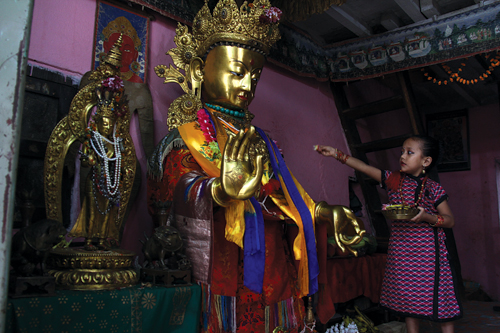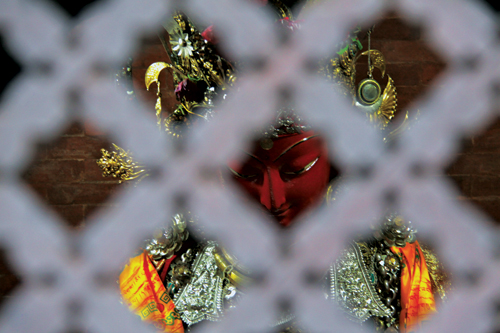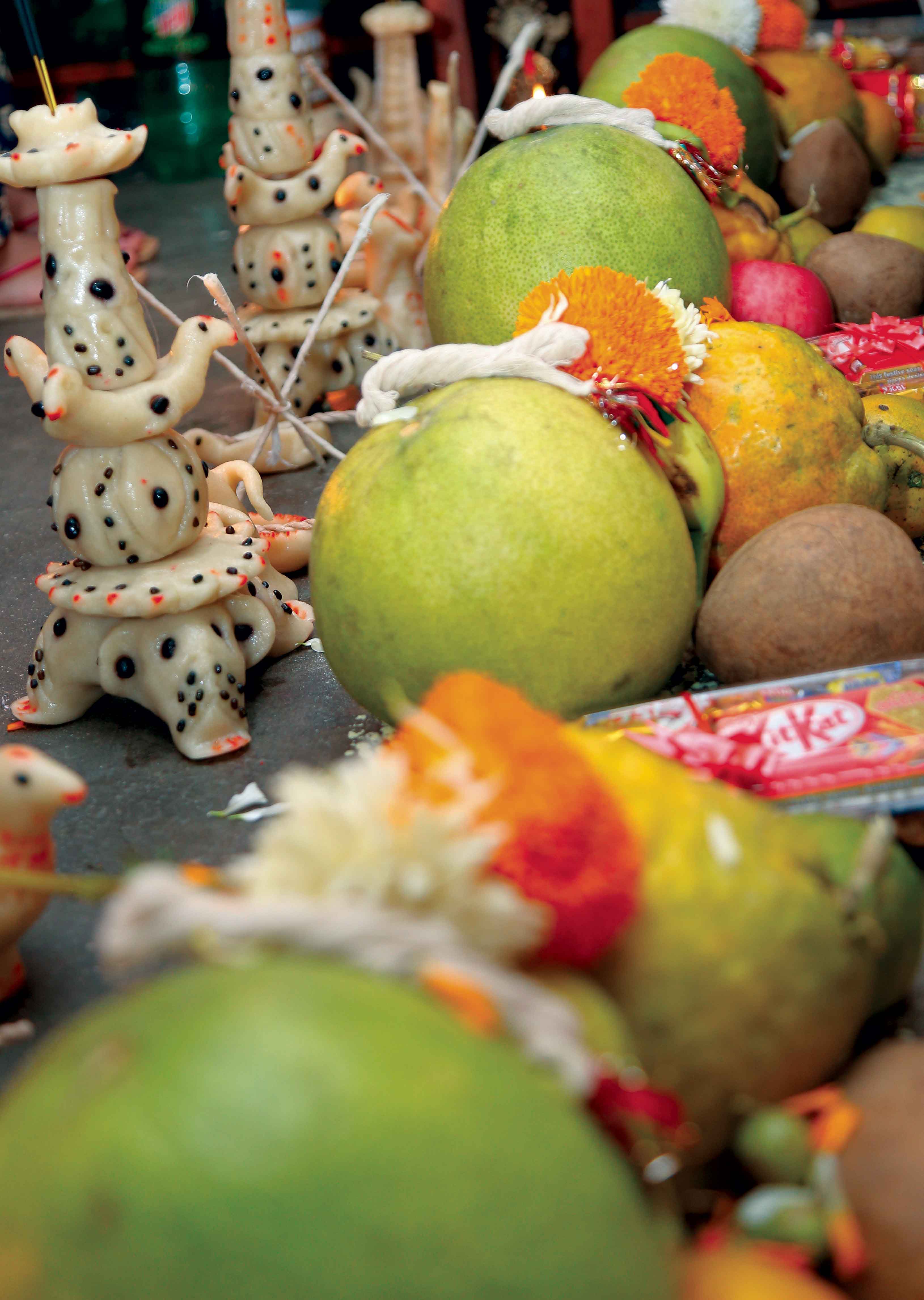Modern times are enforcing undesirable but necessary changes in the age-old practice of publicly showcasing the religious, artistic and economic heritage of many Newar Buddhist families of Kathmandu valley.
According to Buddhist scriptures, a Samyak Sambuddha – an all-knowing supreme being - makes his appearance on earth after the passage of an eon. Twenty-eight such Buddhas have taken birth so far, the latest one being the Shakyamuni Gautama Buddha born in Lumbini in the 6th Century BC. One of the earliest in the series was the Dipankar Buddha. Despite its pre-historic origin, the Newar Buddhist community in Kathmandu valley has upheld the cult of Dipankar with much vehemence and fanfare till today.
Dipankar was a great proponent of the merits of charity. While on his way to receive alms at a magnificent ceremony specially organized by a swanky king, the legend goes, Dipankar stopped en route to receive offerings of a handful of grain from an impoverished old lady who had kept aside a portion of her meager income for giving away. When asked by the puzzled king about the reason for stopping to receive a scanty handout, Dipankar gave a lengthy discourse about the virtue of selfless charity and the demerit of giving away riches collected by unscrupulous means. Suitably convinced, the king took up a menial job with a blacksmith, using the earnings from which, he organized another alms giving ceremony at a later time, albeit on a much smaller scale.

This lore has been venerated to this day by Newar Buddhists of Kathmandu valley by virtuously perpetuating the tradition of giving alms during several different occasions.
Every year, during the Panchadan or Juga Charey festival which falls on the fourteenth day of the dark half of the holy month of Gunla (August-September) – the ninth month of the Nepal Sambat calendar – every Newar Buddhist household in Kathmandu offers alms of rice grains, money and rice pudding to members of the Shakya and Bajracharya priest clan, who go from house to house seeking alms as beckoned by their religious duty regardless of their financial status. The Panchadan festival is held in Patan on the eighth day of the bright half of the same month.
In line with the same philosophy, a two-day alms-giving festival known as Samyak Mahadan is organized every twelve years in Kathmandu – a mammoth event graced by the head of state. A reduced version of the Samyak festival takes place in Patan every five years.
Occasionally, affluent donors come forth to sponsor their own Samyak festival where they bear all expenses of the mega event, and commission the construction of a large image of Dipankar, usually of fire-gilded copper, with an abundance of ornaments bedecked with precious stones and other accessories. The Dipankar statue thus built, also called the Samyak Dyo (deity) after the Samyak festival, is handed down from generations to generation as proof of one’s ancestors having sponsored the elaborate Samyak ceremony.
Proclaiming the wealth and generosity of their ancestors, succeeding generations of the sponsor proudly display the Dipankar image, together with scroll paintings depicting the life stories of important historical figures, publicly for several days every year during the holy month of Gunla, with the most important display dates being the full moon day of Gunla and the day after.
Thousands of individuals and scores of religious Dha and Khin drum troupes visit this colorful exhibit put up behind latticed wooden windows in a room on the ground floor of a public building in the courtyard to which the family belongs. Hence, the exhibition is known as Bahi Dyo Boyegu (bahi - courtyard; dyo - deity; boyegu - exhibit in Nepal Bhasa).

Predictably enough, this display of pomp and opulence comes with its own share of risks. A six-foot gilded Bahi Dyo from a noted courtyard complex in Patan was found missing one fine morning several years ago, together with many smaller images and other accessories. Many months later, most of the stolen items, including the Bahi Dyo image, surfaced at an auction house in Europe. Diplomatic efforts of the Nepal government and the «host» country helped bring back the image safely to its original place of residence two years after it embarked on its foreign journey.
This case has alerted other Bahi Dyo owners about the very real threat of theft, leading to many of them exhibiting the image privately in their residences only for a day or two. While this allows for their family members to visit the Bahi Dyo to pay homage, the public gets no access to them – a practice that is getting increasingly common. Some families have resorted to entrusting the safekeeping of the image to one of the government-owned museums in the city after the exhibition is over for the rest of the year.
It is clear that conditions governed by changing times have enforced Bahi Dyo owners to adopt newer and more pragmatic practices. Nevertheless, for many Newar Buddhists in Kathmandu Valley, the Bahi Dyo Boyegu festival is their proudest moment of the year, as it offers an opportunity to showcase the achievements of their forefathers, with full religious endorsement. This one event also serves to reflect the deep devotional attitude of the people, their uncompromising social values and extraordinary artistic skills.











